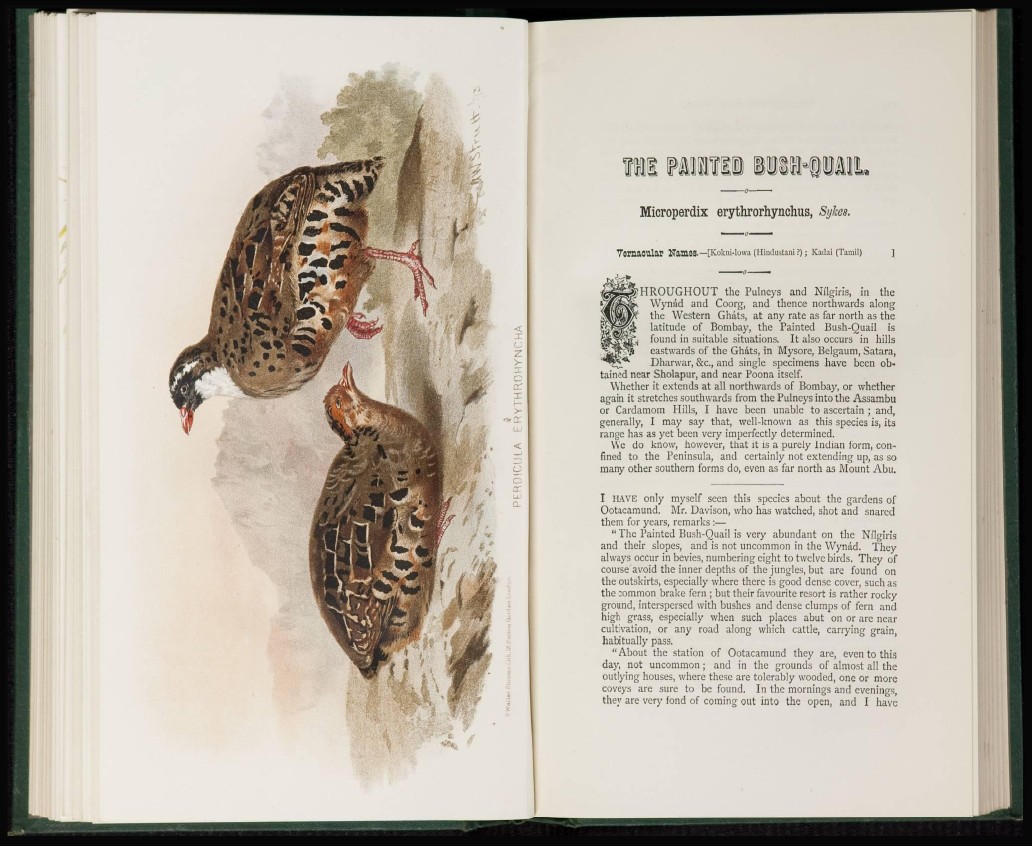
fit MOTH iill^ML
Microperdix erythrorhynchus, SyJees.
Vernacular Names.—[Kokni-lowa (Hindustani ?); Kadai (Tamil) ]
§HROUGHOUT the Pulneys and Nllgiris, in the
Wyndd and Coorg, and thence northwards along
the Western Ghats, at any rate as far north as the
latitude of Bombay, the Painted Bush-Quail is
found in suitable situations. It also occurs in hills
eastwards of the GhAts, in Mysore, Belgaum, Satara,
Dharwar, &c, and single specimens have been obtained
near Sholapur, and near Poona itself.
Whether it extends at all northwards of Bombay, or whether
again it stretches southwards from the Pulneys into the Assambu
or Cardamom Hills, I have been unable to ascertain ; and,
generally, I may say that, well-known as this species is, its
range has as yet been very imperfectly determined.
We do know, however, that it is a purely Indian form, confined
to the Peninsula, and certainly not extending up, as so
many other southern forms do, even as far north as Mount Abu.
I HAVE only myself seen this species about the gardens of
Ootacamund. Mr. Davison, who has watched, shot and snared
them for years, remarks :—
" The Painted Bush-Quail is very abundant on the Nilgiris
and their slopes, and is not uncommon in the Wyndd. They
always occur in bevies, numbering eight to twelve birds. They of
course avoid the inner depths of the jungles, but are found on
the outskirts, especially where there is good dense cover, such as
the common brake fern ; but their favourite resort is rather rocky
ground, interspersed with bushes and dense clumps of fern and
high grass, especially when such places abut on or are near
cultivation, or any road along which cattle, carrying grain,
habitually pass.
" About the station of Ootacamund they are, even to this
day, not uncommon ; and in the grounds of almost all the
outlying houses, where these are tolerably wooded, one or more
coveys are sure to be found. In the mornings and evenings,
they are very fond of coming out into the open, and I have